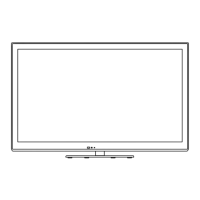
Do you have a question about the Panasonic Viera TC-L47E5 and is the answer not in the manual?
| Screen Size | 47 inches |
|---|---|
| Display Type | LCD |
| Backlight Type | LED |
| Refresh Rate | 60Hz |
| HDMI Ports | 3 |
| USB Ports | 2 |
| Smart TV | Yes |
| Ethernet Port | Yes |
| Wi-Fi | Yes |
| Resolution | 1920 x 1080 (Full HD) |
| Audio Output | 20W |
Lists included accessories and optional items for purchase.
Guides on connecting external devices and antennas to the TV.
Identifies and explains the function of TV controls and the remote.
Step-by-step guide for initial TV setup, including language and country selection.
Instructions on how to tune into and watch television channels.
Accessing special TV features and settings via the VIERA TOOLS menu.
How to view content from connected AV devices like Blu-ray players or game consoles.
Viewing photos, videos, and listening to music from USB or SD card.
Control multiple Panasonic devices with one remote via HDMI.
Connecting to and using network features like IPTV, DLNA, and Network Camera.
Managing channels, including auto-programming, manual tuning, and favorites.
Navigating and adjusting various TV settings via the menu system.
Understanding TV and movie rating systems for parental control setup.
Detailed technical specifications and supported formats.
Instructions for cleaning and maintaining the TV.
Technical specifications including dimensions, power, and connection types.
Answers to common questions about TV operation and troubleshooting.
Alphabetical list of topics covered in the manual for quick reference.
Details on warranty coverage, terms, and conditions for U.S.A. and Puerto Rico.
Contact information for Panasonic customer support, parts, and accessories.
Details on warranty coverage, terms, and conditions for Canada.
Important safety instructions for operating the TV set to prevent hazards.
Ensuring proper ventilation and safe placement of the TV to prevent overheating.
Declaration of conformity with FCC rules for digital devices.
Warning regarding RF exposure limits and proper usage of wireless adapters.
Information and setup guidance for the optional wireless LAN adapter.
Guidelines to prevent injury or death from tipping TVs or children playing with furniture.
Safety recommendations for mounting the TV on a wall securely.
List of items to check for to ensure all accessories are present.
Information on purchasing optional accessories like wireless LAN adapters.
Details and warnings for installing a wall-hanging bracket.
Step-by-step instructions for assembling the TV pedestal.
Procedure for safely removing the pedestal from the TV.
Instructions on how to install batteries in the remote control.
Guidance on how to connect the power cord to the TV and the wall outlet.
Identifies the various connection ports on the back of the TV.
How to connect an antenna or cable service to the TV.
Important notes regarding cable connections and external equipment.
Detailed guide for connecting audio/video equipment using HDMI cables.
Instructions for connecting devices using Component video cables.
Guide for connecting devices using Composite video (AV) cables.
Connecting audio equipment using optical or audio cables.
How to connect a computer to the TV using a VGA connection.
Instructions on how to manage and secure cables using the included clamp.
Location and function of controls and indicators on the TV itself.
Detailed explanation of each button and function on the remote control.
How to turn on the TV for the first time using the power button.
Setting language, country, and viewing mode (Home use).
Information about the store demonstration mode and its consequences.
Selecting the connection type for cable or antenna input.
Automatic channel scanning process for available broadcast signals.
Naming connected devices for easier input selection.
Setting up network connection via Ethernet or wireless.
Manually or automatically setting the TV's clock.
Confirmation that the initial setup process is complete.
Prerequisites and tips for using the wireless LAN adapter.
Steps to display and connect to a wireless network.
How to power on the TV and select channels using the remote or TV buttons.
Method for directly entering digital channel numbers.
Selecting different audio tracks or languages for digital broadcasts.
Turning Closed Caption on/off and its availability.
Showing channel, clock, and signal information on screen.
Adjusting picture aspect ratio and zoom for optimal viewing.
Using the OPTION button for quick access to functions like favorites.
Registering and managing favorite channels for quick selection.
Removing channels from the favorite list.
Navigating through pages in lists, such as the favorite channel list.
Using the remote or USB keyboard to input text and passwords.
Setting and entering a 4-digit password for locked channels or inputs.
Using a USB keyboard as a remote control alternative.
How to display the VIERA TOOLS menu on the TV screen.
Choosing and configuring features like Media Player, DLNA, and Game Mode.
How to select the correct input source for connected external devices.
Controlling external devices using the TV remote or their own remotes.
Overview of viewing photos, videos, and listening to music via USB/SD card.
Correctly inserting and removing SD cards and USB flash drives.
Steps to insert media and open the Media Player interface.
Navigating to select the drive, media type, and specific files.
How to view photos, videos, or play music files.
Features for photo viewing, including slideshow and sorting.
Methods for sorting photos by date, month, or folder.
Adjusting slideshow settings and thumbnail display size.
Adjusting frame, effects, intervals, and repeat playback for slideshows.
Selecting music to play during slideshows.
Features for video playback, including skip and aspect ratio.
Setting repeat playback for videos.
Supported file formats for photos, videos, and music playback.
Features for music playback, including repeat and folder selection.
Customizing picture and audio settings within the Media Player.
Controlling VIERA Link devices from the Media Player menu.
Operations enabled by different versions of HDAVI Control technology.
Steps for connecting and setting up new equipment with VIERA Link.
Information on using compatible HDMI cables for VIERA Link.
How to connect a Panasonic Blu-ray or DVD recorder using HDMI.
Connecting home theater systems or AV amplifiers via HDMI or optical cable.
Connecting video cameras or digital cameras using HDMI.
How to navigate to the VIERA Link settings menu.
Setting VIERA Link to On and configuring other related options.
Automatic input switching and power on/off linking for connected devices.
Using energy saving modes and auto power-off for connected devices.
Setting default speakers and enabling automatic lip-sync adjustment.
Information transmitted from TV to connected equipment.
Navigating the VIERA Link menu and selecting specific control options.
Selecting speaker output and returning control to the TV.
Choosing between TV or home theater speakers for audio output.
Using the TV remote to control connected HDMI equipment.
Switching back to TV input from a connected VIERA Link device.
Accessing Video-on-Demand (VOD) services via the internet.
Sharing and playing media content from a home network using DLNA.
Viewing images from network cameras on the TV.
Ensuring adequate internet speed for network services.
Choosing between a wired or wireless connection to the internet.
Methods for connecting the TV directly or via a router/access point.
Testing the network connection status and settings.
Setting up and connecting to a wireless network using WPS or manual settings.
Configuring IP and DNS settings automatically or manually.
Setting up proxy server address and port if required by provider.
Setting the TV's network name and controlling network remote features.
Setting options for the Online Movies service.
Checking for and performing software updates for the TV.
Configuring notifications for new software and checking network status.
How to display the screen for accessing VOD services.
Customizing picture and audio settings relevant to IPTV viewing.
Navigating to the DLNA feature via VIERA TOOLS.
Choosing a DLNA server and browsing its contents.
Instructions for playing shared media files from a DLNA server.
Accessing the network camera feature through the VIERA Link menu.
Displaying live feeds from connected network cameras on the TV.
Setting up antenna or cable connections and performing auto-program.
Automatically searching and adding available channels to memory.
Editing channel captions and setting favorite channels.
Manually programming channels and applying edits.
Using the signal meter to check reception quality.
How to access and navigate the TV's main menu.
Choosing and adjusting settings within different menu categories.
Customizing picture settings like mode, brightness, contrast, and color.
Setting screen format, size, and zoom for optimal viewing.
Adjusting PC input settings, sync, dot clock, and position.
Configuring HDMI input range and content type for connected devices.
Fine-tuning picture settings like noise reduction and black level.
Adjusting audio quality, volume levels, and speaker settings.
Setting preferred language and audio type for digital broadcasts.
Detailed configuration for network connection and services.
Setting the TV to turn on or off automatically at scheduled times.
Locking channels, programs, or EASY IPTV with parental controls.
Configuring channel selection mode and menu language.
Labeling input devices and configuring closed caption display.
Managing VIERA Link and adjusting energy saving modes.
Configuring auto power on and media playback auto-play.
Procedure to restart the initial setup process.
Instructions for resetting all TV settings to factory defaults.
Explanation of MPAA movie rating categories for parental control.
Explanation of U.S. TV program rating categories and content descriptors.
Explanation of Canadian English and French rating systems.
Explanation of different aspect ratio modes like FULL, JUST, ZOOM.
Adjusting vertical position and size when using ZOOM aspect mode.
Adjusting horizontal size to reduce noise on image edges.
Supported file formats for photos, videos, and music playback.
Important precautions for using and handling SD cards with the TV.
Meaning of messages displayed when using SD cards or USB drives.
Information on HDMI interface, compatibility, and usage.
Connecting home theater systems to the digital audio output.
Details on how closed captions work with different signal types.
Pinout diagram for the D-sub 15P PC input connector.
List of compatible horizontal and vertical scanning frequencies for PC input.
Proper methods for cleaning the TV screen surface gently.
Instructions for cleaning the TV cabinet, pedestal, and power cord.
Power, consumption, aspect ratio, and general features for all models.
Details of video, audio, USB, LAN, and other input/output terminals.
Physical dimensions and weight of the TV with and without stand.
Troubleshooting picture problems related to external devices and signal quality.
Resolving issues with black bars, snowy pictures, and chaotic video.
Troubleshooting blank screens, blinking indicators, and small screen spots.
Resolving problems with no sound, distorted sound, or incorrect language.
Connecting HD devices and troubleshooting closed caption display.
Troubleshooting remote control and grayed-out menu option problems.
Getting EASY IPTV to work and checking for software updates.
Using USB WiFi adapters and resetting the TV to factory defaults.
Explains parts, labor, and service terms for warranty coverage.
How to obtain on-site or carry-in service for warranty repairs.
Instructions for sending the product for mail-in warranty service.
Details limitations and exclusions from warranty coverage.
Contact information for customer service, parts, and literature requests.
Information on how to purchase accessories and replacement parts.
Details on warranty coverage, parts, labor, and service for Canada.
Specifies what is not covered by the Canadian warranty.
Contact details for warranty service and product repairs in Canada.
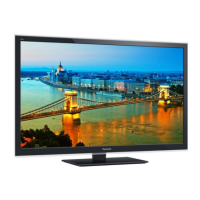
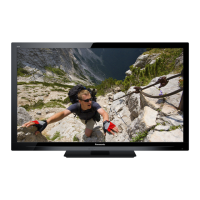
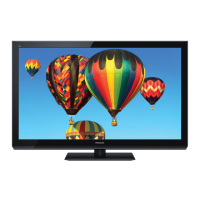
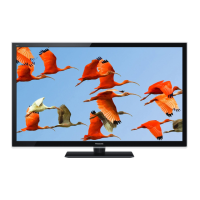
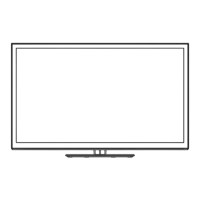
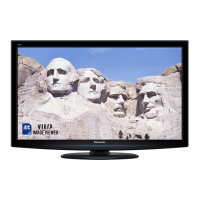
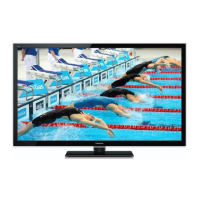

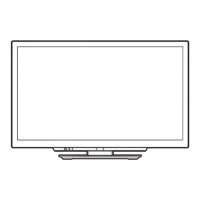
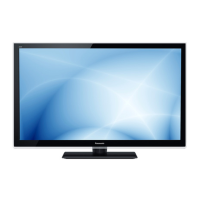
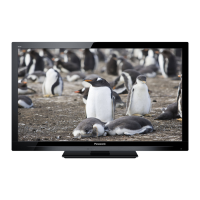

